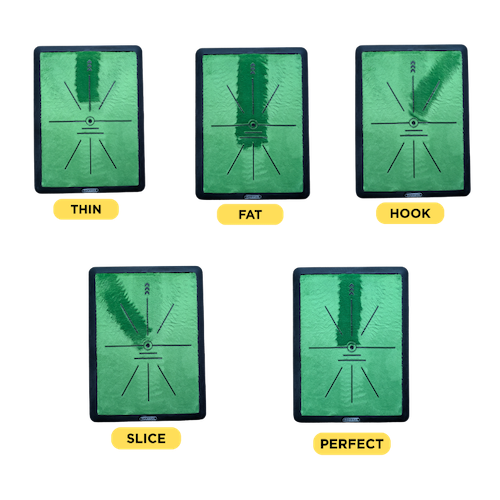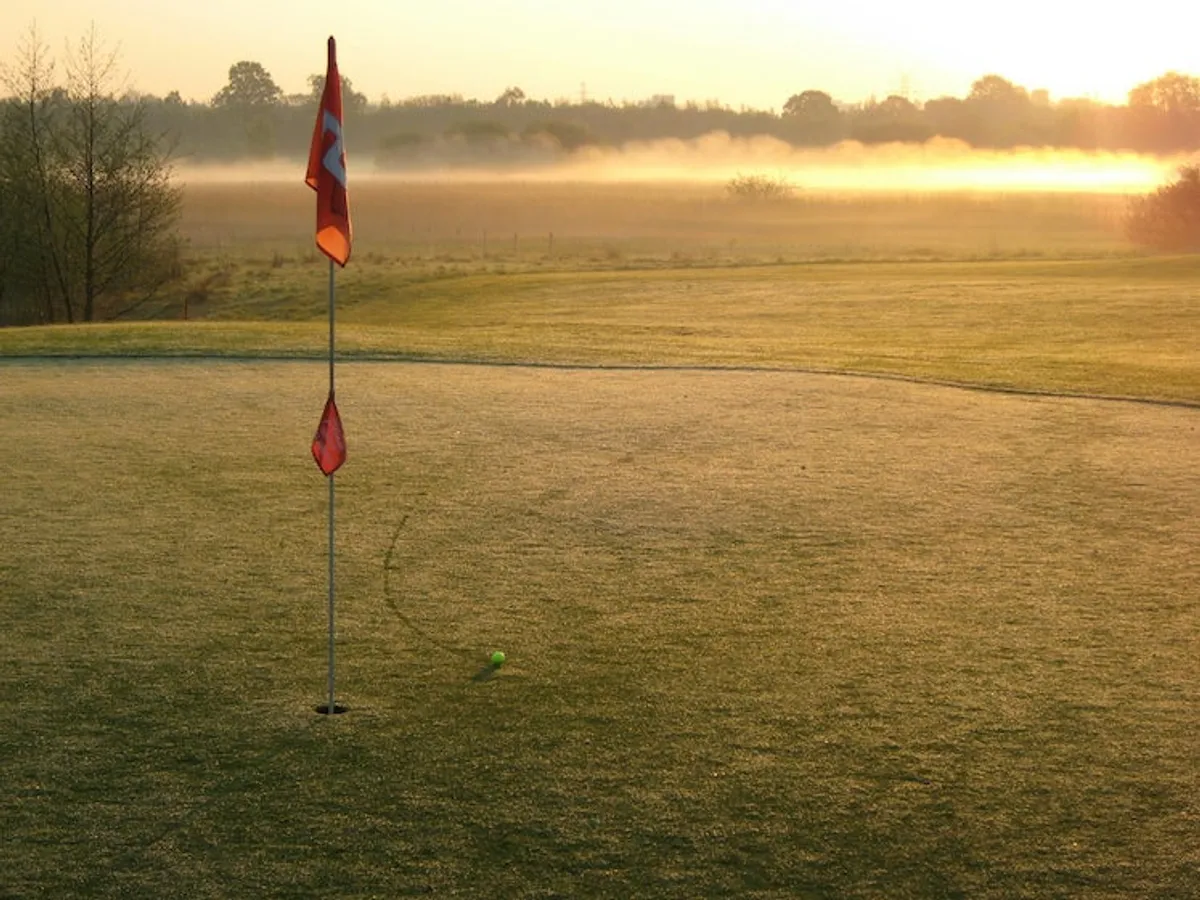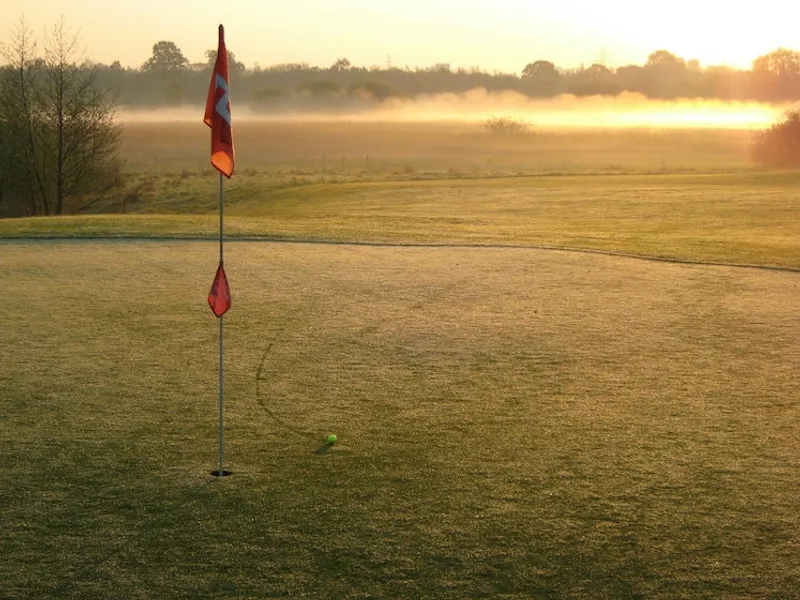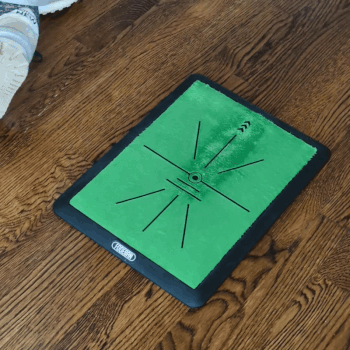A shallow golf swing keeps your club on a flatter, more relaxed path into impact, rather than letting it plunge down steeply from above. This approach emphasizes fluid movement, which can lead to more consistent, cleaner ball striking.
I know firsthand—and have seen many fellow golfers experience—the frustrations of a steep swing that never quite feels right. Releasing that steep angle in favor of a shallower approach can open the door to smoother contact, more dependable results, and a game that feels naturally intuitive.
What Is a Shallow Golf Swing?
A shallow golf swing sets your club on a flatter path as the downswing begins. Instead of dropping the club sharply from above, the clubhead follows a more horizontal track toward the ball. This subtle change in angle affects the entire motion, allowing for more fluid mechanics that feel less forced.
The Downswing Plane Demystified
In a shallow swing, the club’s descent traces a gentle arc rather than a steep, vertical path. By flattening this “plane,” you reduce the likelihood of driving the clubhead into the turf too early. Visualize a wide, sweeping curve instead of a quick drop—this adjustment helps keep the clubface aligned with your target, preserving both power and control.
How to Fix Swing Flaws From Home Without a Coach or Expensive Gadgets
Struggling with thins, fats, slices—or just can’t tell what’s going wrong?
This swing mat shows you exactly how your club strikes the ball, giving instant visual feedback after every shot. With just a few swings, you’ll start spotting mistakes in your swing path that are otherwise invisible.

It’s a quick, low-hassle way to connect what you feel in your body with what’s really happening at impact.
Use it indoors or out, no ball required—just swing and learn. It’s one of the fastest ways to improve your swing right from home.
Enhanced Energy Transfer and Impact
A shallower angle also creates a smoother flow of power. When the clubhead glides in a flatter motion, momentum transfers more evenly at the moment of impact. Many golfers notice that this leads to cleaner contact and a satisfying blend of power and accuracy, ultimately boosting confidence in their swing.
Why Shallow Your Swing?
Drawbacks of a Steep Swing
A steep swing carries the club on a sharply descending path, often resulting in erratic contact. Fat shots can become commonplace, with the club digging into the turf before striking the ball. This disconnect between the clubhead and the intended path leads to inconsistency and frustrating mis-hits that send the ball off target or barely lift it at all.
Advantages of a Shallow Swing
A shallower approach encourages the club to glide smoothly through the hitting zone, helping you make more reliable contact. The flatter path keeps the club from digging into the ground and reduces the likelihood of fat shots. With a gentler arc, you can maintain control during impact, promoting accuracy and overall consistency. Many golfers find that a shallower downswing simply feels more natural, allowing them to swing with greater confidence.
How to Transition to a Shallow Golf Swing
Establish a Balanced Weight Shift
Begin with a relaxed, natural setup that allows you to stand comfortably with your weight evenly distributed. As you initiate the downswing, rotate your hips gently toward the target while shifting weight onto your front foot. This gradual transfer supports a flatter, more controlled swing path.
Relax the Wrists and Refine Arm Positioning
Excess tension in your wrists and forearms can push the club into a steep descent. Keep your grip light so your wrists can hinge and unhinge smoothly through the swing. Allow your arms to follow the rotation of your torso instead of forcing the motion. This sense of freedom encourages a more horizontal club path and a natural rhythm through impact.
Embrace Natural Body Movement
Rather than relying solely on your arms, let your body lead the swing. Start by rotating your shoulders and hips in a fluid motion, and let your arms and wrists respond as an extension of that turn. Concentrate on synchronizing each part of your body so the club can drop into a shallower plane without feeling forced.
Integrate Drills to Reinforce the New Path
Practice slow-motion swings where you pause at the point of weight transfer, taking a moment to visualize the desired flatter angle. Alignment sticks or markers on the ground can guide you away from a steep drop. Repetition builds muscle memory; the more you rehearse a shallow path at a comfortable tempo, the more natural it becomes.
Make Incremental Adjustments and Seek Feedback
Work on one swing element at a time—perhaps focusing on weight shift first, then letting your wrists relax, or smoothing out your rotational sequence. If possible, have a coach or friend watch your swing or video-record it for further analysis. Small, steady improvements tend to be more lasting than trying to fix everything at once.
Pitfalls to Avoid
Overcorrecting the Swing Angle
When you try too hard to force a flatter path, you risk swinging unnaturally. Strive for gentle refinements, trusting your body’s rotational movement. Extreme changes can undermine the fluidity that a shallow swing aims to create.
Exaggerating the Shallow Change
It’s tempting to assume that a more pronounced flattening automatically equals better shots. In reality, exaggeration often disrupts your sense of balance and timing. A controlled shift in angle is far more effective than a dramatic overhaul.
Excessive Tension and Forced Movements
Pursuing an ideal shallow position can lead to gripping the club too tightly or tensing key muscles. This rigid approach hinders your natural flow and can produce awkward, inconsistent contact. Keep your grip light, breathe deeply, and let your body move with ease.
Rushing the Transition
Making multiple changes all at once can be overwhelming. This abrupt shift may rob your swing of the flow you’ve built over time. Instead, adjust gradually and focus on developing consistent habits. Each small step forward can solidify your new, shallower technique.
Conclusion
A shallow golf swing guides the club along a flatter path, leading to smoother energy transfer and cleaner, more consistent strikes. By replacing a steep drop with a gentle angle, you pave the way for greater control through impact and a more enjoyable game overall.
Emphasizing balanced weight shift, relaxed arms, and gradual adjustments helps you avoid pitfalls like overcorrection, tension, or rushing the process. With steady practice and a clear focus on each swing’s mechanics, you’ll discover a confident, more rewarding approach on the course.






